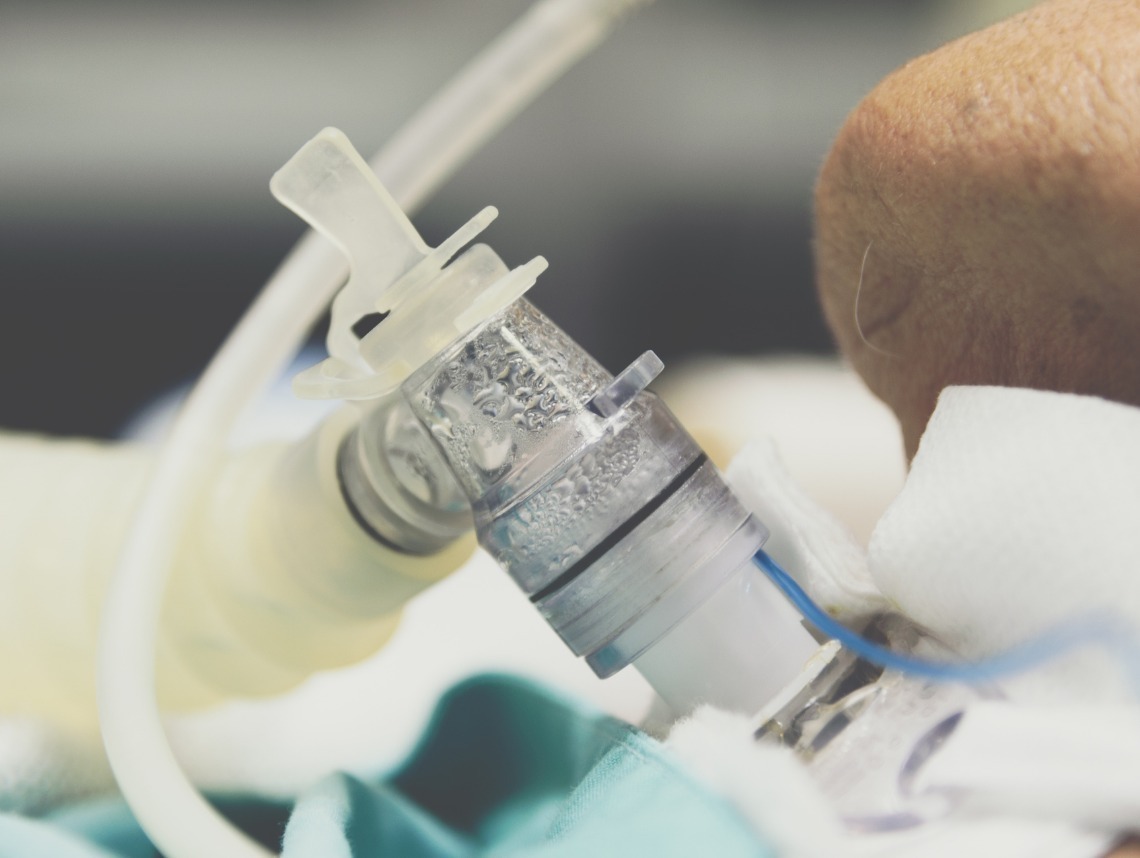When you’re seeking medical advice, the last thing you need is for your doctor to start talking about conditions and surgeries that sound like a foreign language. This can add to the stress and sense of helplessness — especially if the patient is your child. Such can be the case with tracheostomies and tracheotomies. What do they mean? What do the procedures entail? And how will they change your or your loved one’s life?
What is a tracheostomy?
A tracheotomy is a surgery on a person’s neck to provide an air passage to the trachea (also known as the windpipe). It’s performed on patients for whom a medical condition is causing either a blockage on the windpipe or reducing the amount of space available for proper breathing.
Once the opening has been created, a tube is inserted through the hole and secured in place. This procedure is done on individuals who require a ventilator long-term. Depending on the person’s circumstances, they may need it temporarily or permanently.
Tracheostomy vs. Tracheotomy
While a tracheostomy is the name of the surgical procedure to install the tube, a tracheotomy is the name of the neck opening. The name of the tube that’s inserted into it is a tracheotomy tube. The incision is performed on the front of the neck, right below the vocal cords.
In some circumstances, the tracheotomy tube is inflated to prevent air from leaking out. This is also useful to prevent saliva or liquids the patient swallows from entering the windpipe and getting into the lungs.
What is the purpose of a tracheostomy?
A tracheostomy is performed on patients due to a lack of air getting to the lungs. Depending on the patient’s health, they may need the artificial air passage temporarily or permanently, which allows a person to breathe without the use of the nose or mouth. If the need for it is temporary, once removed, the incision will heal into a scar. The process of removing this tube is called tracheal decannulation.
When is a tracheostomy procedure necessary?
There are many reasons a person may need a tracheostomy. If they’ve experienced severe trauma (due to a car crash, sports injury, or any other type of accident), and their regular breathing pathways are obstructed, they will need another way to breathe.
People with throat cancer may also need a tracheostomy. This is because tumor growth may block a patient’s windpipe, making it difficult or painful to breathe. Another complication that may result in needing the surgery is severe swelling of the trachea.
Also, patients who may need a tracheostomy include those with fractured vertebrae, epiglottitis, vocal cord paralysis (VCP), or anaphylaxis, among a long list of other ailments.
What’s involved in the tracheostomy procedure?
The patient will undergo general anesthesia. The surgeon will then make an incision on the person’s anterior neck and pull back the neck muscles to expose the trachea.
The doctor will then cut a second incision on the trachea and insert a tracheostomy tube. The opening on the trachea is called a stoma. This is where the mechanical ventilation is connected.
How long does a tracheostomy procedure take?
The entire procedure should take between 20 and 45 minutes to complete. However, you may need to stay in the hospital for several days afterward. The length of the stay will depend on the patient’s diagnosis, medical history, overall health, and age. For example, a patient with a history of blood clots or infections will need additional monitoring.
Can you talk with a tracheostomy?
Speech is generated when air flows over the vocal cords. When you get a tracheostomy, you breathe through the tracheotomy tube. This means that there’s no air going over the cords. This makes speech extremely difficult. This lends itself to frustrations and often depression — especially among people who were relatively independent before undergoing surgery.
However, some patients do regain their ability to talk with special tracheostomy tube valves such as a Passy-Muir Speaking Valve. Others may undergo speech therapy. However, the tube won’t allow patients to regain the same ability to speak that they had prior to the procedure.
Tracheostomy in Children
Children with tracheostomies need constant, around the clock supervision. This is because you’ll need to complete regular checks, including:
- Monitoring your child’s breathing (you can do this with an apnea monitor)
- Ensuring no water gets into the tracheostomy tube (trach tube)
- Making sure the child doesn’t dislodge the tube
- Suctioning the trach tube as needed
- Being prepared for an emergency if the trach comes out or malfunctions
You’ll also need to learn how to change your child’s trach at home, in accordance with the pediatrician’s instructions, and learn basic emergency procedures.
What are some of the most common complications?
As with any surgical procedure, tracheostomies carry a risk of complications. Patients who are at higher risk of experiencing them may be required to stay hospitalized for longer to ensure their health. The most common ones include the following:
Blockage with Mucus and Other Secretions in the Hole
This can be resolved by monitoring the patient and suctioning the tracheostomy as needed. While healthcare professionals do this in a hospital setting, once the patient is discharged to go home, home caregivers can learn how to do it as well.
Tube Dislodgement
This could happen due to a reduction in neck circumference if a patient is losing weight. It could also happen during routine activities, such as dressing or bathing. This is why it’s so essential to have a spare tracheostomy nearby and proper training for re-insertion. Depending on the patient’s circumstances, tube dislodgement could be fatal.
Infections
The stoma could cause skin irritation or infection if not cleaned properly. It could also occur if the tube moves too much, causing friction around the tracheotomy. This is why it’s crucial to learn how to monitor and clean the stoma.
Can you talk after a tracheostomy is removed?
Speaking After Tracheostomy Removal: The biggest impact of undergoing this procedure is that it will be more difficult to speak afterward. This will result in frustration — and sometimes even anxiety or depression — for the patient. It will also emotionally affect the loved ones caring for the person.
Let your loved one know you’re paying attention to them. Ask if they’d like to communicate anything. Provide them with pictures, pen, and paper. If they’re too weak to communicate that way, ask simple yes or no questions, such as “Are you comfortable?” “Would you like me to rearrange your pillows?” “Are you thirsty?” “Would you like me to read to you?”
Some patients may regain their ability to talk through a talking tracheostomy tube or by undergoing speech therapy.
Can you eat after a tracheostomy is removed?
Eating After Tracheostomy Removal: Most people are able to eat normally after a tracheostomy. However, depending on the medical circumstances, the patient may need a feeding tube following surgery. Just as with cleaning the stoma, home caregivers will be given instructions on how to continue taking care of the patient at home.
Contact Care Options for Kids for Tracheostomy Home Care
It can be hard to balance your time between work, home, and caring for a loved one. That’s why our team of skilled professionals at Care Options for Kids is here to help.
Our home health care services offer support in the comfort of your home. We refer loving and competent nurses to provide customized care for families — from a few hours a day to around-the-clock supervision. Contact us directly to speak with a home health care professional or request a free in-home assessment. Together we can determine the best plan of action to keep your loved ones happy and healthy.
If you or an aging loved one are considering home care services, contact the caring staff at Care Options for Kids. Call today at (888) 592-5855.






